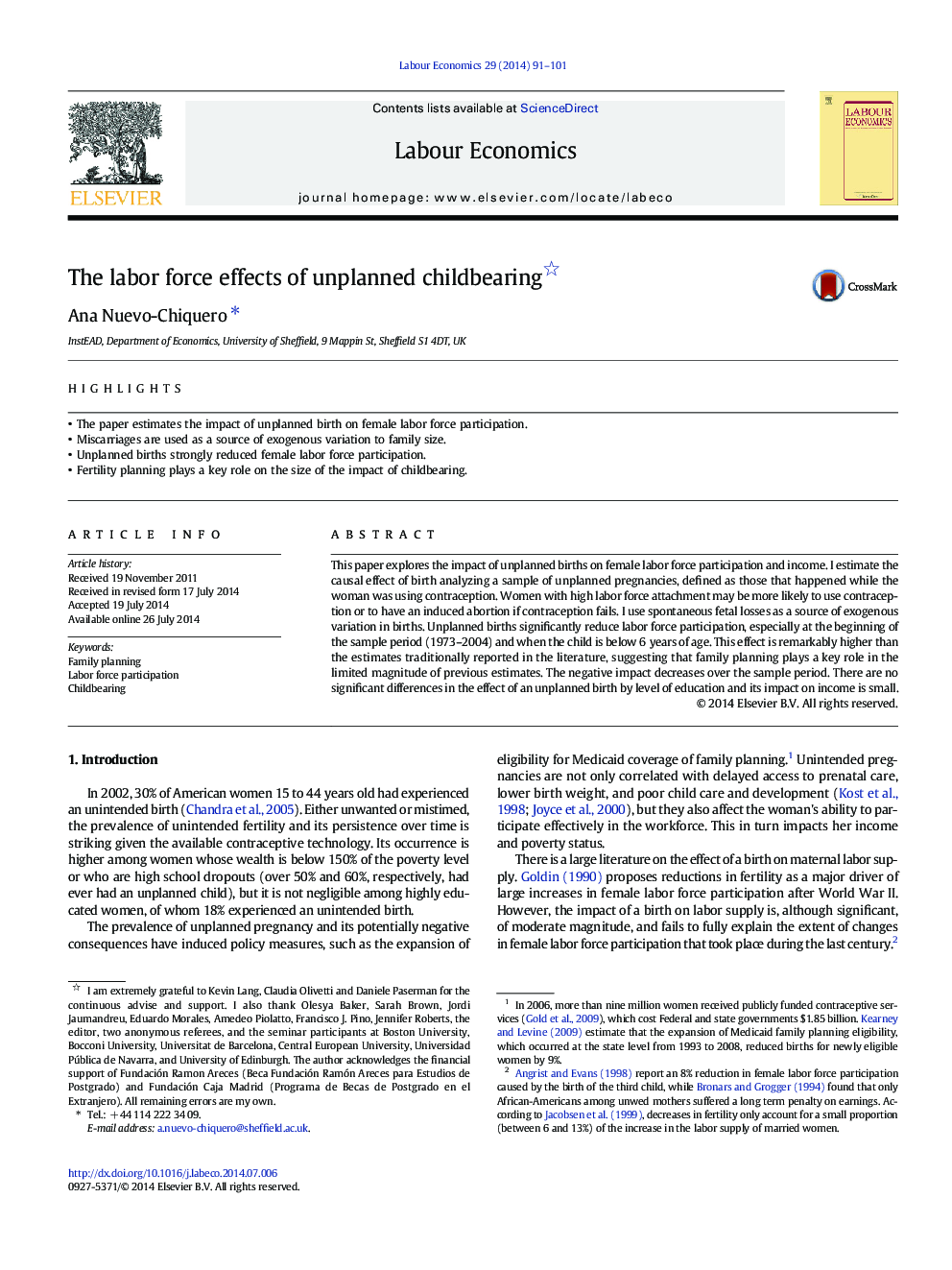| Article ID | Journal | Published Year | Pages | File Type |
|---|---|---|---|---|
| 971812 | Labour Economics | 2014 | 11 Pages |
•The paper estimates the impact of unplanned birth on female labor force participation.•Miscarriages are used as a source of exogenous variation to family size.•Unplanned births strongly reduced female labor force participation.•Fertility planning plays a key role on the size of the impact of childbearing.
This paper explores the impact of unplanned births on female labor force participation and income. I estimate the causal effect of birth analyzing a sample of unplanned pregnancies, defined as those that happened while the woman was using contraception. Women with high labor force attachment may be more likely to use contraception or to have an induced abortion if contraception fails. I use spontaneous fetal losses as a source of exogenous variation in births. Unplanned births significantly reduce labor force participation, especially at the beginning of the sample period (1973–2004) and when the child is below 6 years of age. This effect is remarkably higher than the estimates traditionally reported in the literature, suggesting that family planning plays a key role in the limited magnitude of previous estimates. The negative impact decreases over the sample period. There are no significant differences in the effect of an unplanned birth by level of education and its impact on income is small.
